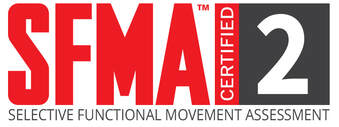|
StrongFirst – Our core philosophy at StrongFirst, "the school of strength": Strength is a skill. Strength also has a higher purpose. StrongFirst is a school of strength focused on the three core mediums of the kettlebell, bodyweight and the barbell. People who work with us are not “clients” but rather “students.” Students of strength. Although mostly known for the popularization of the kettlebell in the US by Pavel Tsatsouline more than twenty years ago, the teachings of StrongFirst apply to so much more. We simply have found that the kettlebell is perhaps the most effective way to teach fundamental lessons of strength in a way that transfers across many domains. Earning the SFG Level I kettlebell certification is a life changing event for many, and that includes myself.
Titleist Performance Institute – the leaders in golf fitness, yet so much more than golf. A core tenet of TPI is “there are millions of different ways to swing the golf club, but the most efficient was is based on what your body is physically capable of doing.” Sport or activity specific movement is based on what our body can do at a fundamental level. If you can’t turn your trunk 90 degrees on its own, you won’t be able to do it when making a golf swing. Appreciating this reality shifts our focus away from forcing people into certain positions and postures based on what we think looks right and instead helping harmonize technique with physical abilities. This is a dynamic process and it begins with the understanding the “body-swing connection.” How you swing is dictated by how your body moves. We can apply this fundamental concept across any sport or activity by assessing whether the body has the underlying physical capability to perform the technical skill that is being asked of it.
0 Comments
If you made it this far into the site, you probably have at least some interest in learning more about how I can help you and how I go about it. This upcoming series of posts will describe some of the systems that shape how I treat patients. Of course many people couldn't care less about the minutiae as long as it works, but I know there are some readers out there who may be interested in learning more of the background that informs the treatment they might receive. Dynamic Neuromsucular Stabilization. (DNS) – a treatment approach out of the Prague School of Rehabilitation based on developmental kinesiology. Basically DNS operates on the principle thatcertain movements are “pre-downloaded” into our nervous system. No one has to tell a baby how to suck its thumb, roll over, chew, swallow, move its eyes, stand, walk and many other key developmental milestones. When problems arise later in life, the ability to access these “files” can provide incredible outcomes in recapturing movement and behavior that was seemingly lost. As such, during rehab, we’re not trying to force the body to do anything truly novel, we’re simply helping it reengage with something it already knows how to do. Learning DNS principles not only helps with the application of DNS methodology, it also explains why other successful approaches are also effective. Functional Movement Systems (Functional Movement Screen and Selective Functional Movement Assessment) – The FMS is a battery of seven screens based on key movement patterns within the developmental process that help identify where deficits may exist in how our body moves. Fundamentally, it looks at reaching, kicking, pressing, rotation, stepping, landing and changing levels. Identifying limitations in any of these domains allows us to address the individual’s weak links that may interfere with the training process or simply with quality of life.
At its most basic level, the FMS takes our focus away from parts and guides our attention toward patterns. After identifying patterns, we can then peel away the layers and focus on details, but only after an appreciation of how the body interacts with itself and its environment as a while. The Selective Functional Movement Assessment is the clinical analog to the Functional Movement Screen. If someone presents with pain, then the SFMA is the proper channel to guide the process of reaching a functional diagnosis. (Note the difference between a functional and structural diagnosis. Structural diagnosis might be patellar tendinitis. Functional diagnosis example would be limited ability to squat (change levels) as a result of insufficient ankle dorsiflexion. |
AuthorAllan Phillips, PT, DPT is owner of Ventana Physiotherapy Archives
December 2023
Categories
All
|
2951 N. Swan Rd.
Suite 101, inside Bodywork at Onyx
Tucson, Arizona 85712
Call or Text: (520) 306-8093
[email protected]
Terms of Service (here)
Privacy Policy (here)
Medical disclaimer: All information on this website is intended for instruction and informational purposes only. The authors are not responsible for any harm or injury that may result. Significant injury risk is possible if you do not follow due diligence and seek suitable professional advice about your injury. No guarantees of specific results are expressly made or implied on this website.
Privacy Policy (here)
Medical disclaimer: All information on this website is intended for instruction and informational purposes only. The authors are not responsible for any harm or injury that may result. Significant injury risk is possible if you do not follow due diligence and seek suitable professional advice about your injury. No guarantees of specific results are expressly made or implied on this website.
Proudly powered by Weebly




 RSS Feed
RSS Feed